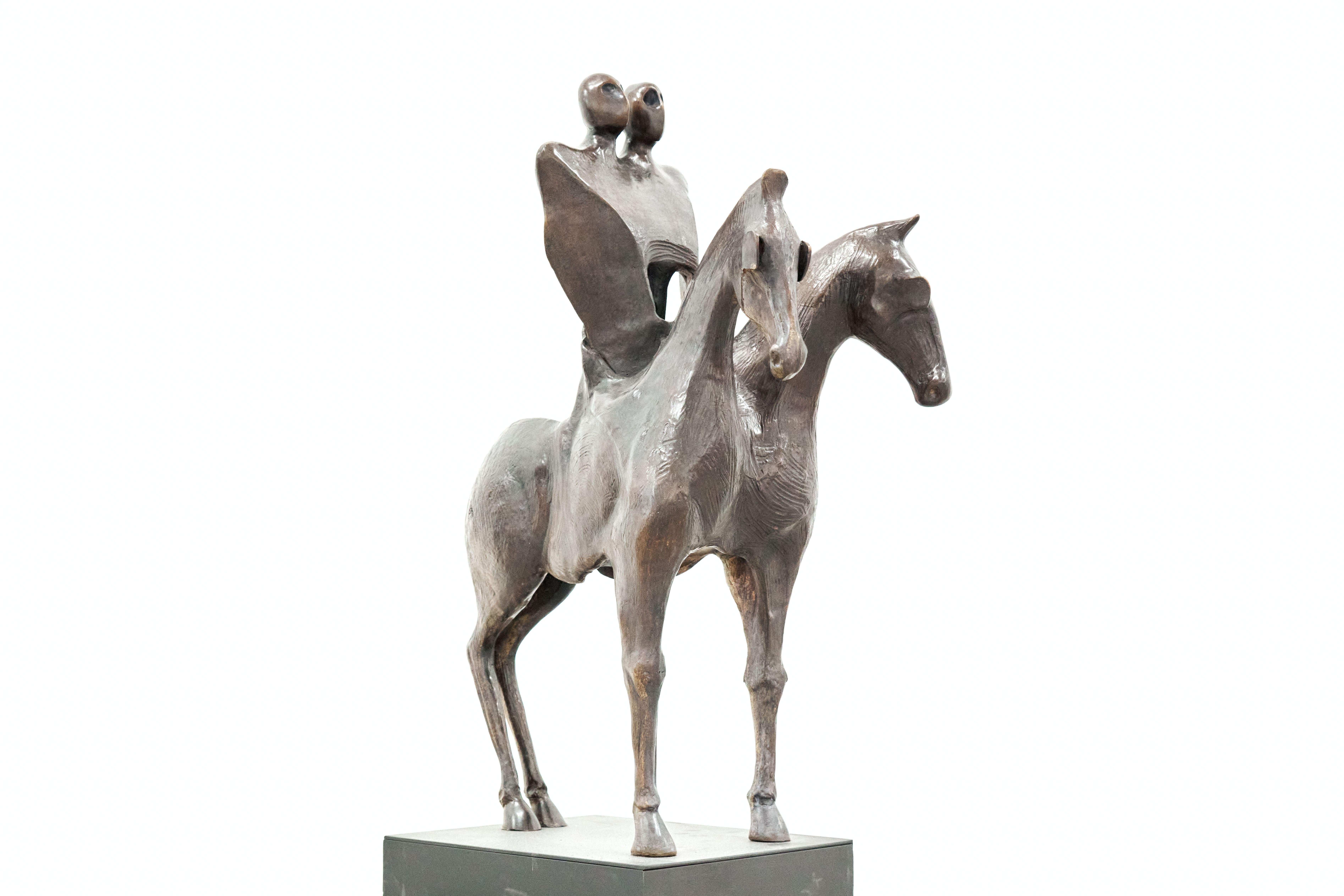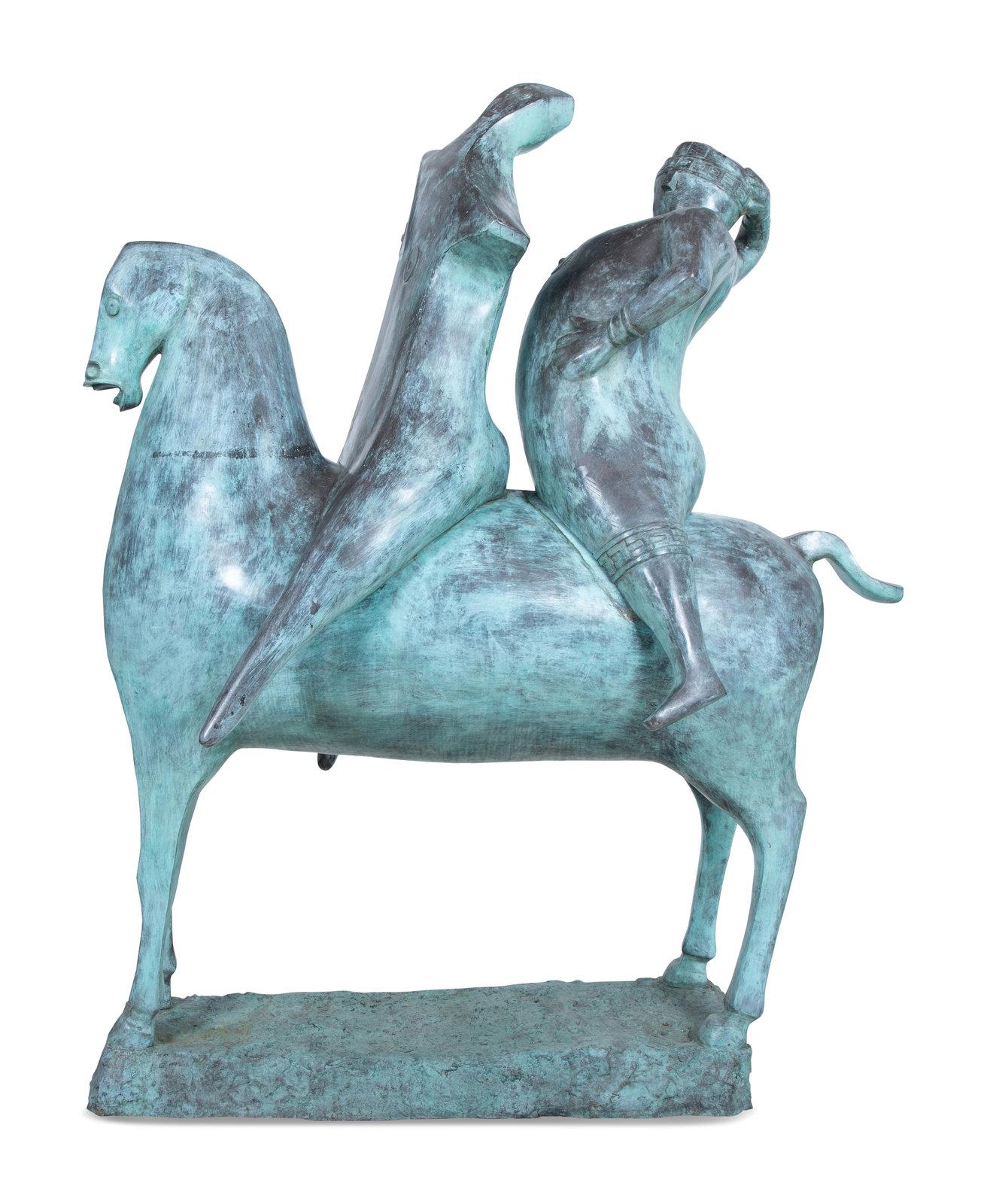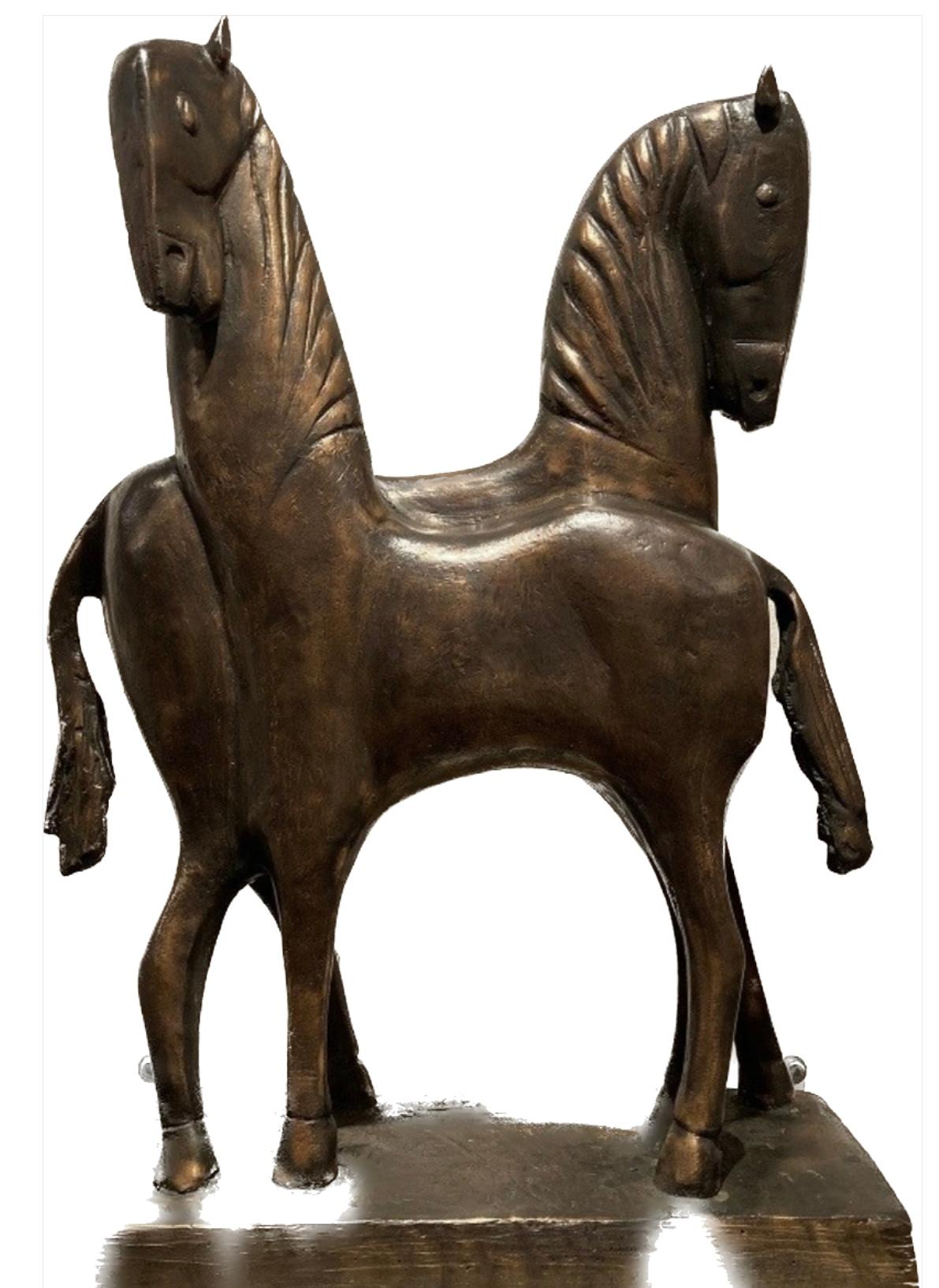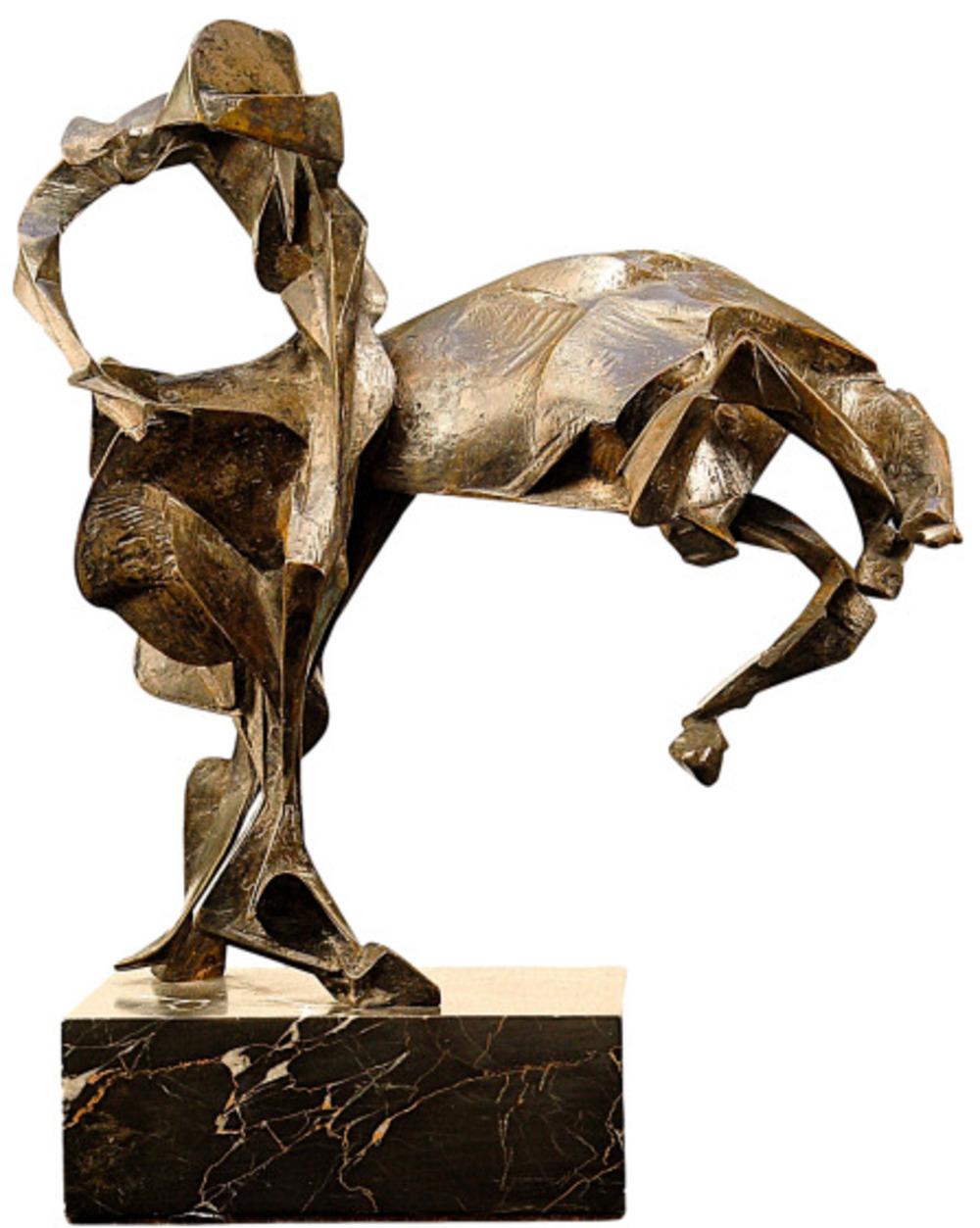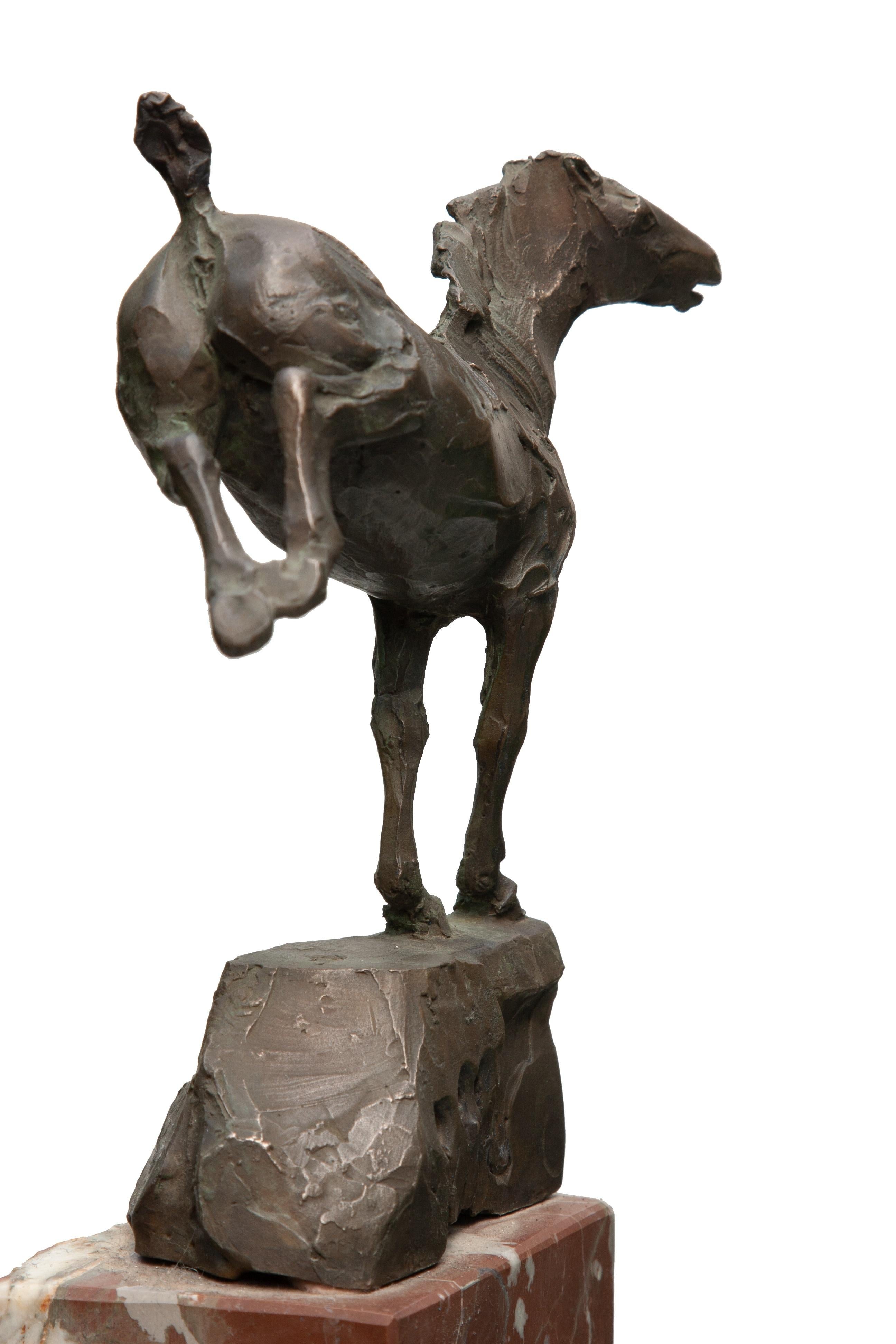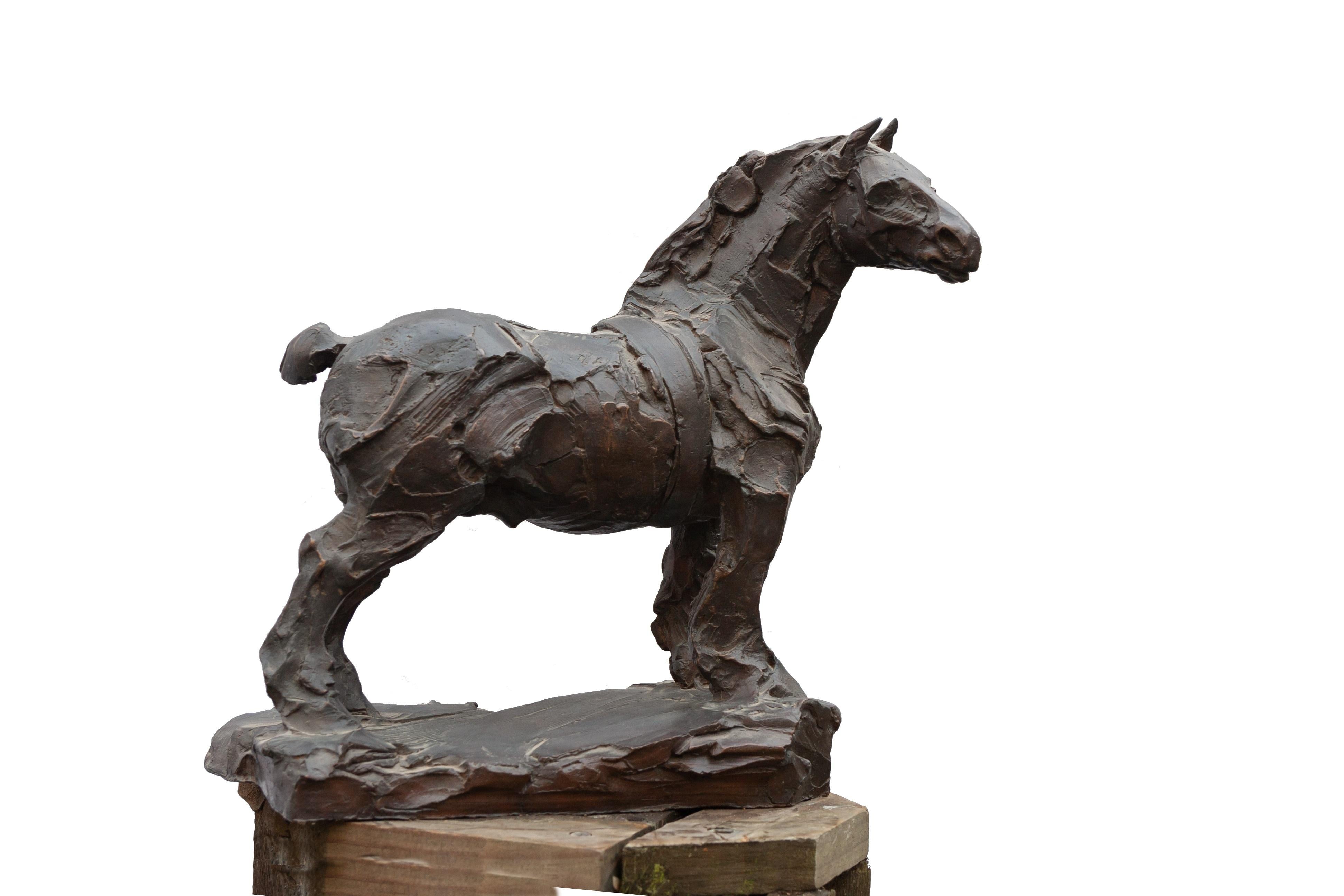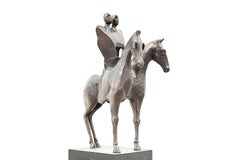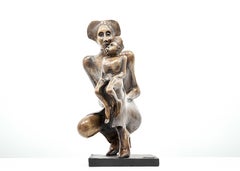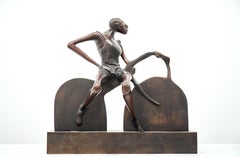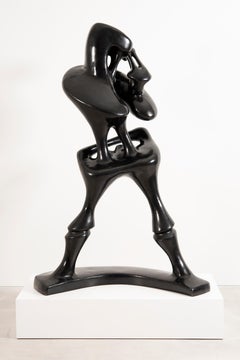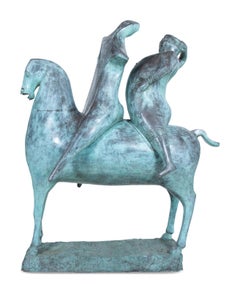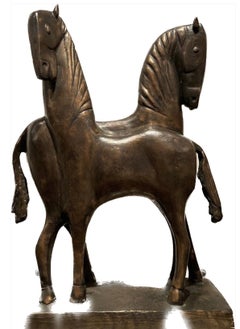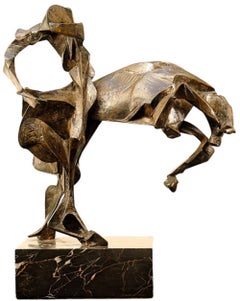Items Similar to Jorge Seguí, Falsos Heroes en Caballos Míticos, Bronze, Edition 1/7, 2010-2013
Want more images or videos?
Request additional images or videos from the seller
1 of 6
Jorge SeguíJorge Seguí, Falsos Heroes en Caballos Míticos, Bronze, Edition 1/7, 2010-20132010-2013
2010-2013
Price Upon Request
Price Upon Request
Price Upon Request
Price Upon Request
Price Upon Request
Price Upon Request
Price Upon Request
Price Upon Request
Price Upon Request
Price Upon Request
About the Item
Jorge Seguí
Falsos Heroes en Caballos Míticos, 2010-13
Bronze, Edition 1/7
110 x 71 x 70 cm 43.3 x 27.9 x 27.5 in.
Signed and Numbered.
Jorge Seguí b. 1945, Argentina. He attended the School of Fine Art of Argentina, Specializing in Sculpture at the University of Córdoba. At the age of 20 he traveled to Spain to extend his studies and soon exhibited in Peru, Ecuador, Colombia and Venezuela. He lived and worked in Venezuela for 20 years. During the following years he participated in many exhibitions, obtaining the National Engraving Award Swift, Museum of Modern Art in Buenos Aires. Since 1996, he has lived and worked in the United States. He has received important international recognitions, and he is present in important fairs of art. Is represented in collections deprived in Europe, Latino America and the United States, as well as in recognized galleries and museums of Florida.
Jorge Seguí, complex imaginer, is the product of his philosophical investigations on humanity. Their sculptures raise an ideal being and phenomenal, incarnation of the generic masculine and feminine archetypes.
- Creator:Jorge Seguí (1945, Argentinian)
- Creation Year:2010-2013
- Dimensions:Height: 43.3 in (109.99 cm)Width: 27.9 in (70.87 cm)Depth: 27.5 in (69.85 cm)
- Medium:
- Movement & Style:
- Period:
- Condition:
- Gallery Location:Miami, FL
- Reference Number:1stDibs: LU161328853642
About the Seller
5.0
Vetted Professional Seller
Every seller passes strict standards for authenticity and reliability
Established in 1989
1stDibs seller since 2021
Typical response time: 20 hours
- ShippingRetrieving quote...Shipping from: Miami, FL
- Return Policy
Authenticity Guarantee
In the unlikely event there’s an issue with an item’s authenticity, contact us within 1 year for a full refund. DetailsMoney-Back Guarantee
If your item is not as described, is damaged in transit, or does not arrive, contact us within 7 days for a full refund. Details24-Hour Cancellation
You have a 24-hour grace period in which to reconsider your purchase, with no questions asked.Vetted Professional Sellers
Our world-class sellers must adhere to strict standards for service and quality, maintaining the integrity of our listings.Price-Match Guarantee
If you find that a seller listed the same item for a lower price elsewhere, we’ll match it.Trusted Global Delivery
Our best-in-class carrier network provides specialized shipping options worldwide, including custom delivery.More From This Seller
View AllJorge Seguí, Falsos Heroes en Caballos Míticos, 2010-2013, Bronze, Edition 1/7
By Jorge Seguí
Located in Miami, FL
Jorge Seguí
Falsos Heroes en Caballos Míticos, 2010-2013
Bronze, Edition 1/7
110 x 71 x 70 cm 43.3 x 27.9 x 27.5 in.
Signed and Numbered.
Jorge Seguí b...
Category
2010s Contemporary Figurative Sculptures
Materials
Bronze
Jorge Seguí, Esperansilla, Bronze, Edition 1/7, 2003
By Jorge Seguí
Located in Miami, FL
Jorge Seguí
Esperansilla, 2003
Bronze, Edition 1/7 + 3AP
71.1 x 40.6 x 30.4 cm 28 x 16 x 12 in.
Signed and Numbered.
Jorge Seguí b. 1945, Argentina. He a...
Category
Early 2000s Contemporary Figurative Sculptures
Materials
Bronze
Price Upon Request
Jorge Seguí, Ciclista IX, Bronze, Edition 7/7, 1990-1995
By Jorge Seguí
Located in Miami, FL
Jorge Seguí
Ciclista IX, 2010-13
Bronze, Edition 7/7
70.5 x 18 x 70 cm 27.7 x 7 x 27.5 in.
Signed and Numbered.
Jorge Seguí b. 1945, Argentina. He attend...
Category
1990s Contemporary Figurative Sculptures
Materials
Bronze
Price Upon Request
Agustín Cárdenas, El Violinista, Bronze, Edition 3/3, 1989, Big size
By Agustín Cárdenas
Located in Miami, FL
Agustín Cárdenas
El Violinista, 1989
Bronze. Ed. 3/3
177 x 120 x 61 cm 69.6 x 47.2 x 24 in.
AGUSTIN CARDENAS
(b. 1927, Matanzas, Cuba; d. 2001 Havan...
Category
1980s Futurist Figurative Sculptures
Materials
Bronze
Maqueta Armonía de Volúmenes y Espacios, La Hoyada
Located in Miami, FL
Maqueta Armonía de Volúmenes y Espacios
-La Hoyada- BMPC-002, 1980(1982)
Edition /25
Bronze
48 x 37 x 26 cm
18.8 x 14.5 x 10.2 in.
ABOUT THE ARTIST
Narváez was born in Porlamar, Venezuela, in 1905; he was the fifth son of eleven siblings; his parents were Jose Lorenzo Narváez and Vicenta Rivera. Don José Lorenzo, a multifaceted and creative man, sowed the seed of creativity in his son. “My father did not fit in with his fantasies of cabinetmaker, bricklayer, master builder, and self-taught architect.”1 From an early age, Francis was led to the artistic activity, he traced, carved, made replicas of the furniture and the saints restored by his father.
In 1920 he obtained his first professional assignment, a San Rafael for the Church of Carupano, and, in 1922, his father authorized him to travel to Caracas to pursue his studies as an artist. He studied at the atelier of Marcos Castillo, at of the Angel Cabre y Magriña and at the Academy of Fine Arts in Caracas, where he was introduced to the painters and intellectuals of the time.
In 1928 he presented his first solo exhibition at the Club Venezuela. With the money raised from the sale of the works and the support of Monsignor Sosa, and the Ministers Centeno Grau and Arcaya, he studied in Paris on a scholarship. Once there, he enrolled at the Académie Julian, where Tito Salas, Cristóbal Rojas and Arturo Michelena had also studied. It was in Paris where, unable to work in wood, he turned to stone carving. “In Paris, I didn’t have wood, so I carved a lot in stone (…), when there were demolitions I purchased chunks of stone, I would take them to the workshop and carve them.”2
His first attempts at volumetric sculptures and painting in plain colours, linked to the thematic of American miscegenation and Creole reality, can be traced back to that first trip to Paris. During his stay in the French city, Arturo Uslar Pietri, Alfredo Boulton, and Finita Vallenilla supported the artist both financially and logistically, and in February of 1930, the trio of friends arranged another exhibition for him at the Club Venezuela. Narváez describes his exhibition as follows: “(…) in it I feel that the sculptural work is more my own, done with more assurance, a response to my pursuit of large planes, stylisation and synthesis.”3 By then, as Boulton himself noted in his book about the artist, Narvaez departed from most of the artistic traditions that prevailed by that time in Venezuela.
In 1931 he returned to Caracas and established his atelier at the Barrio Obrero in Catia. The atelier became the hub of the intellectual life of the time. “In those years, the atelier of Francisco Narváez was the hub of the greatest Venezuelan hope. Nothing comparable to it can be found either before or since.”4
From that year onwards, exhibitions, projects, trips, and awards we multiplied. He was awarded the President of the Republic of Venezuela Prize, the National Sculpture Prize of the 1st Official Venezuelan Art Salon, and the John Boulton Prize of the 3rd Annual Venezuelan Art Salon; for the Military Academy, he produced a spectacular relief entitled La Patria.
In 1945, commissioned by the architect Carlos Raúl Villanueva, he produced two groups of sculptures known as Las Toninas, both located in the O’Leary Square. There, as he himself states, he incorporates some baroque patterns into the figures to the source itself: “It is a work of balance between the decorative requirements and the sculpture of planes and angles.”5
In 1948 he was awarded the National Painting Prize. In the same year, he was called upon by the architect Carlos Raul Villanueva to participate in the project for the arts integration in the Universidad Central de Venezuela. Francisco Narváez’s public output continued with works such as the statue of Fermín Toro, La Educación, La Ciencia, three murals (produced by María Luisa Tovar) for the Instituto de Medicina Experimental, El Cristo; el Atleta, the equestrian statue of General Rafael Urdaneta.
In 1953 he was appointed Director of the School of Plastic and Applied Arts, and in July of the same year, he exhibited “Francisco Narváez, Maderas, Piedras y Bronces” (Francisco Narváez, Woods, Stones and Bronzes) at the Museum of Fine Arts.
Narváez is, unquestionably, one of the great Venezuelan sculptors, his work goes through various stages and interests; as the art world evolves, the artist does not remain in his initial scopes of work. His creations are not imposed by the prevailing trends or fashion but do evolve by experimenting with new materials and interests.
When one peruses the artist’s lengthy list of exhibitions, commissions, and awards, it is worth remembering the Narvaez who embark on his career as a child and who, overcoming obstacles, knew how to make the most of his curiosity. He did not settle for living off his successes. He did not remain stagnant as many creators of his environment did. Narvaez managed to understand the changes in the history of art around him. We must not overlook the fact that Francisco Narvaez is an artist amid all the changes occurring in the art world. He moves from the classics to the great transformations in the art world. It is the Europe of Picasso, Braque, Arp. He observes, he is aware of what is happening in the centres of the world of art, but between his craft and his sensitivity, the result is NARVAEZ, his stamp, and his identity.
Francisco Narváez comes from tradition, and his first stage is linked to the classics, to the exploration of his heritage, but always with his very own language. Throughout his prolific career, he knew how to remain true to himself, without disregarding the influences of his surroundings or his artistic interests: his ability as a sculptor, his selection of materials, whether they were wood, stone or bronze; his choice of the subject of his work…His mastery and great craftsmanship are a constant that over time have made him a leading player in the history of contemporary Venezuelan and world art.
From his beginnings, no subject was foreign to him. His paintings, drawings, aquarelles, and sketches are testimony to his prolific output. Among his themes are portraits, our traditions, still lifes, and landscapes. Narváez is an artist who represents his time. Later, he evolved towards purer and simpler forms, abandoning figurative art for short periods.
In 1956 he declared to the newspaper El Nacional: “Every day I am freeing myself, it is a soul that frees itself from the ephemeral wrappings of the circumstantial always, as well as from the inevitable weight of the anecdote. This second stage of my work is remarkably close to abstractionism, even if there are still certain figures or figurations in the sculptures that I will shortly be showing. However, pure, and absolute abstractionism, it will treat the form itself as the sole reason for its existence on the plane of artistic excellence.”6
The artistic development was his professional life. Each period of his life as an artist, he went one step further, searching, solving, seeing plenty of things and understanding how diverse expressions were transforming themselves. His hands followed his gaze and his mind, always inquisitive. He added movement to the volumes.
Arturo Uslar Pietri, “Formas Nuevas”, Cromotip editions, 1956 “Francisco Narváez is a path: the path that Venezuelan sculpture...
Category
1980s Abstract Abstract Sculptures
Materials
Bronze
Jorge Seguí, Ilusion silla, 2000, Bronze, Edition of 7, 78 x 90 x 33 cm
By Jorge Seguí
Located in Miami, FL
Jorge Seguí
Ilusion silla, 2000
Bronze, Edition of 7
78 x 90 x 33 cm 30.7 x 35.4 x 12.9 in.
Signed and Numbered.
Jorge Seguí b. 1945, Argentina. He atte...
Category
Early 2000s Contemporary Figurative Sculptures
Materials
Bronze
You May Also Like
Horse With Two Riders Life Size Bronze Sculpture
Located in Lake Worth Beach, FL
Horse With Two Riders
Large Outdoor Bronze Sculpture 1974
Artist signed, edition 2/6. Light blue green patina.
Deaccessioned from the Boca Raton Museum of Art.
This is a stunning ...
Category
1970s Modern Figurative Sculptures
Materials
Bronze
Ascott Bronze Sculpture Horses Together Dutch Realism In Stock
By Theo Mackaay
Located in Utrecht, NL
Ascott Bronze Sculpture Horses Together Dutch Realism In Stock
Theo Mackaay (1950)
Mackaay works with recognizable shape:: women, men and animals, with a pointer at the primal form. Archetypal motives like warriors, women, horses, archers, lovecouples, created with his own signature. An example of this work is the wellknown ‘Gouden Kalf’, the big prize of the ‘Nederlands Film Festival’, designed in 1980 by Mackaay, commissioned by Jos Stelling, filmdirector and initiator of the festival.
There has been big developments in his work after the calf, but the basic forms are still to be found in his work. The renewal in his work has been a internal fight, between the two sides of his brain. The wild artist animal and the changed, peaceful, contemplative sculptor. The last one won! Not only did he change as a human being, his work changed with him. Big, tough, expressionist bronzes and stone statues whith the woman and animal as favourite subject, changed in touching, intimate bronze sculptures.
In the early work of Mackaay, the masters of the past were more visible, like Marino Marini and Ossip Zadkine. Now it seems, the artist is letting go of the past and found his own form language, after all the highs and lows in his life. His wandering through France, Italy and China brought him to Malaga in Spain, his current residence. Maybe it is the Mediterranean Sea or the Spanish sun...
Category
21st Century and Contemporary Contemporary Figurative Sculptures
Materials
Bronze
Bucephalus – Bronze Sculpture by Manolis Tzobanakis
Located in Gent, VOV
In Bucephalus (1973), also known as Alexander, the King of Macedonia, Manolis Tzobanakis crystallizes the explosive encounter between ancient myth and modern form into a single, comp...
Category
20th Century Modern Abstract Sculptures
Materials
Bronze
Solo Horse Sculpture Bronze Jumping Animal In Stock
By Lucie Sentjens
Located in Utrecht, NL
Solo Horse Sculpture Bronze Jumping Animal In Stock
Lucie Sentjens (Brussels, 1959) is a sculptor, graduated from the Cambre in 1982 in the studio of Rik Poot.
She takes evening pa...
Category
21st Century and Contemporary Contemporary Figurative Sculptures
Materials
Bronze
Labour Horse Sculpture Bronze Standing Animal Power In Stock
By Lucie Sentjens
Located in Utrecht, NL
Labour Horse Sculpture Bronze Standing Animal Power In Stock
Lucie Sentjens (Brussels, 1959) is a sculptor, graduated from the Cambre in 1982 in the studio of Rik Poot.
She takes e...
Category
21st Century and Contemporary Contemporary Figurative Sculptures
Materials
Bronze
Constelación Del Caballo Menor, Bronze Tabletop Sculpture by Binkele
By Lina Binkele
Located in Long Island City, NY
Bronze sculpture by Lina Binkele is a modern expressionist rendering of a horse. In the classic tradition, her horse sculptures capture the wonder of the animal's anatomy and the ma...
Category
20th Century Expressionist Figurative Sculptures
Materials
Bronze
More Ways To Browse
Argentina Sculpture
English Setter Dog
Ernest Charles Walbourn
Ernest Hart
Exhibition Posters 1960s
Ferris Wheel Painting
Foire De Paris Vintage Poster
Francis Besson
Francis Holman
Francis Sartorius
Franck L Painting
Frederic Bazille
French Painting Vertical
Friends Vintage Posters
Frigate Paintings
Fritz Buhler
G Wilhelm
Gay Fine Art Painting
